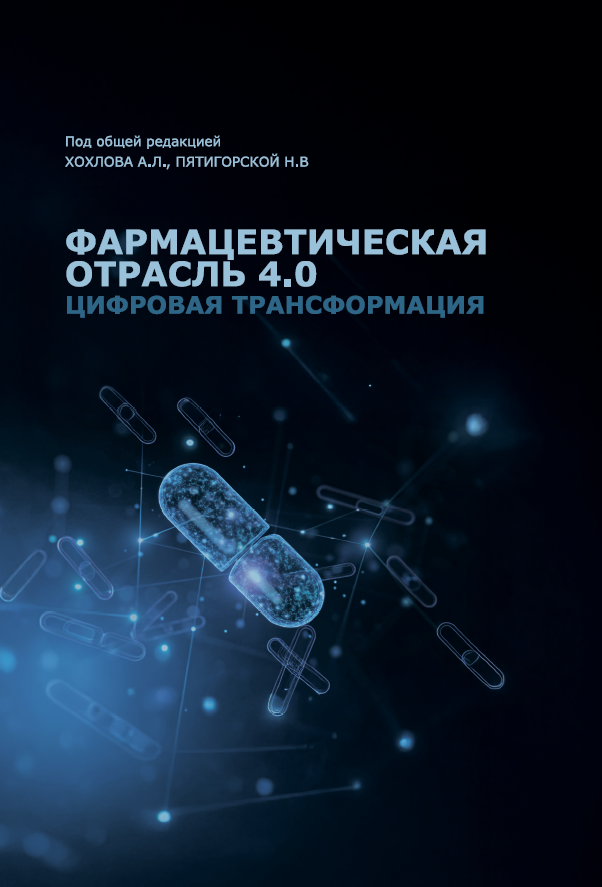Основные механизмы развития неблагоприятных побочных реакций
Аннотация
Проблемы, возникающие при использовании лекарственных средств (ЛС), могут быть весьма разнообразными. Они отличаются фармакологическими и патогенетическими механизмами развития в эпидемиологическом и юридическом отношении, а также могут иметь различные последствия. Развитая система фармаконадзора заинтересована в изучении неблагоприятных побочных эффектов и лекарственных взаимодействий как проблем, касающихся неэффективности лекарств, их фальсификации, развития пристрастия или передозировки, так и нерационального использования. В России система фармаконадзора только формируется. В этих условиях чрезвычайно актуальным является использование рациональных методологических приемов и классификаций при оценке побочных эффектов.
Ключевые слова
Об авторах
Е. А. ОвчинниковаРоссия
Л. К. Овчинникова
Россия
кафедра организации и управления в сфере обращения лекарственных средств
Список литературы
1. Meyboom R.H.B., Gribnau F.W.J., Hekster Y.A., de Koning G.H.P., Egberts A.C.G., An АВС of Drug Related Problems. Drug Safety, 2000, Jun, 22 (6), 415-423.
2. Drug Monitoring. Тhе role of the hospita1. WHO Тесhniса1 Report Series 425. World Health Organization, Geneva, Switzerland, 1969.
3. Edwards I.R., Biriell С. Harmonisation in pharmacovigilance. Drug Safety, 1994; 10: 93-102.
4. Lazarou J., Pomeranz B.H., Corey P.N. Incidence of adverse drug reactions in hospitalized patients. JAMA, 1998, 279, 1200-1205.
5. Bates D.W., Spell N., Cullen D.J., et al. The costs of adverse drug events in hospitalized patients, JAMA, 1997, 277, 307-311.
6. Green C.F., Mottram D.R., Rowe P.H., Pirmohamed M. Adverse drug reactions as a cause of admission to an acute medical assessment unit: a pilot study. Journal of Clinical Pharmacology and Therapy, 2000, Oct., 25 (5), 355-361.
7. Fattinger K., Roos M., Vergeres P., et al. Epidemiology of drug exposure and adverse drug reactions in two swiss departments of internal medicine. British Journal of clinical Pharmacology, 2000, Feb, 49(2), 158-167.
8. Lepori V., Perren A., Marone C. Adverse internal medicine drug effects at hospital admission. Schweiz Med Wochenschr, 1999, Jun 19, 129 (24), 915-922.
9. Schoenemann J., Munter K.H., Enayati4Kashani S. Unwanted drug effects in clinical practice. Dtsch. Med. Wochenschr., 1998, Apr 9, 123(15), 448-452.
10. Rawlins М.О., Thompson J.W. Mechanisms of adverse drug reactions. In: Davies ОМ, editor. Textbook of adverse drug reactions. IV_th ed. Oxford: Oxford University Press, 1991, 18-45.
11. Inman WHW, editor. Monitoring for drug safety. 2nd ed. Lancaster: МТР Press, 1986.
12. Royer R.J. Mechanism of action of adverse drug reactions: an overview. Pharmacoepidemiol. Drug. Saf. 1997, Suppl. 3: S43-S50.
13. Меуbооm R.H.B., Egberts A.C.G., Edwards I.R., et аl. Principles of signa1 detection in pharmacovigilance. Drug. Saf., 1997; 16: 355-65.
14. Dukes M.N.G., editor. Meyler’s side effects of drugs. 13th ed. Amsterdam: EIsevier Science Publishers, 1996.
15. Wiholm B.E., Olsson S., Moore N., et al. Spontaneous Reporting Systems Outside the US. Pharmacoepidemiology, Third Edition by B.L. Strom, 2000, 175-192.
16. Косорукова И.М. Токсикодермия, Русский медицинский журнал, 1999, № 14(96), 652-657.
17. Bastuji4Garin S., Fouchard N., Bertocchi M., Roujeau J.C., Revuz J., Wolkenstein P. SCORTEN: a severity of illness score for toxic epidermal necrolysis. J. Invest. Dermatol., 2000, Aug, 115(2), 149-153
18. Kathy G., Supple. Toxic epidermal Necrolysis: a critical care challenge. B.M.J., 1998, 316, 1295-1298
19. Murphy J.T., Purdue G.F., Hunt J.L. Toxic epidermal necrolysis. J. Burn. Care Rehabil., 1997, Sep_Oct, 18(5), 417-420.
20. Wolkenstein P., Revuz J., Toxic epidermal necrolysis, Dermatol. Clin., 2000, Jul, 18(3), 485-495.
21. Strom B.L, editor. Pharmacoepidemiology. 2_nd ed. Chichester: John Wiley & Sons, 1994.
22. The committee for the assessment of the biometric aspects of controlled tria1s of hypoglycaemic agents. Special Report. JAМA, 1975, 213, 583.
23. Committee of Principle Investigators. А cooperative tria1 in the primary prevention of ischaemic heart disease using clofibrate. Br. Heart. J. 1978, 40, 1069.
24. Conroy S., Choonara L., Impicciatore Р., et аl. Survey of unlicensed and off label drug use in pediatric wards in European countries. BMJ, 2000, 320, 79-82
25. Kohn L.T., Corrigan J.M., Dona1dson M.S., editors. То err is human. Building а safer health system. Committee оп Qua1ity of Hea1th Care in America. National Academy Press, Washington ОС, 1999.
26. Nelson К.М., Talbert R.L. Drug_related hospital admissions. Pharmacotherapy, 1996; 16, 701-7.
27. Medawar С. Тhе antidepressant web. Int. J. Risk. Saf. Med. 1997, 10, 75-127.
28. Чекалаева И.И. Фальсификация лекарственных средств – проблема решаемая//Новая аптека, 2001, 6, 48-51.
29. Государственный контроль качества лекарственных средств: состояние и проблемы//Фармацевтический вестник, 1999, 3, 4.
30. Kimura К. WHO Data Base оn Counterfeit Pharmaceuticals. World Health Organization, Geneva, 1998.
31. Counterfeit Drugs. Guidelines for the development of measures to combat counterfeit drugs. Department of Essential Drugs and Other Medicines. World Health Organization, Geneva, Switzerland, 1999.
32. Катцунг Б.Г. Базисная и клиническая фармакология. М.: «Бином», Санкт_Петербург «Невский Диалект», 1998.
Рецензия
Для цитирования:
Овчинникова Е.А., Овчинникова Л.К. Основные механизмы развития неблагоприятных побочных реакций. Качественная клиническая практика. 2004;(1):57-66.















































